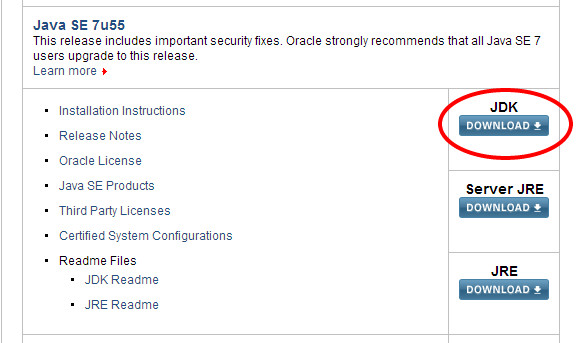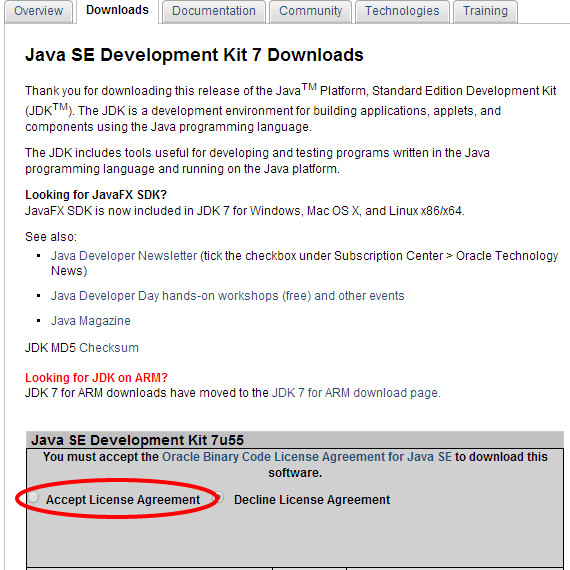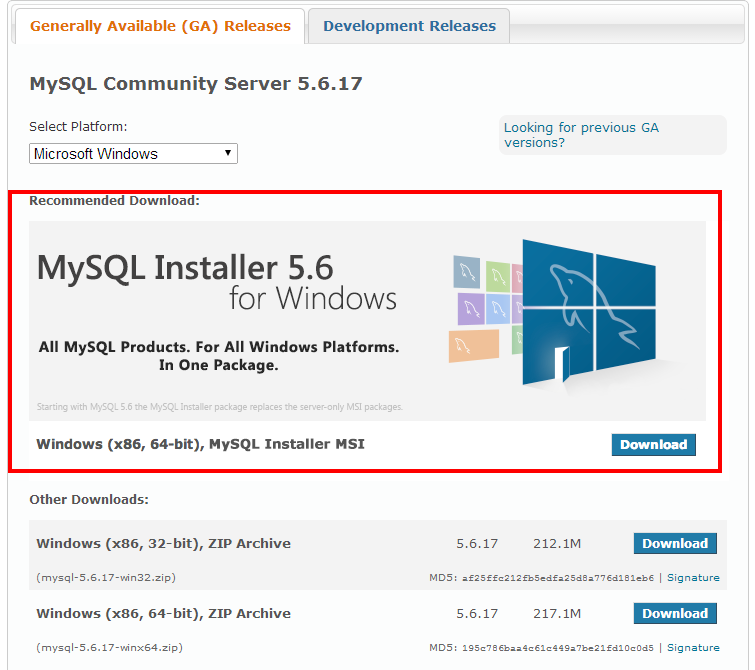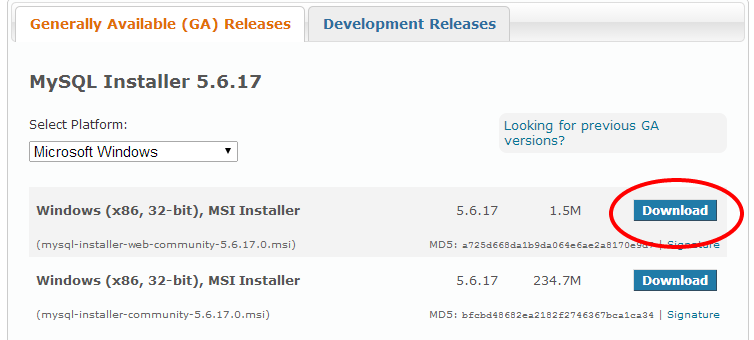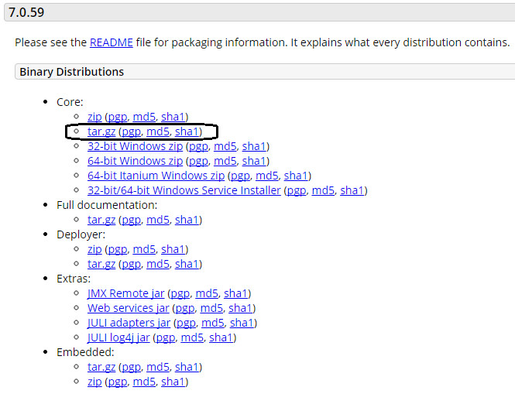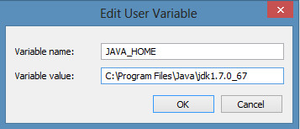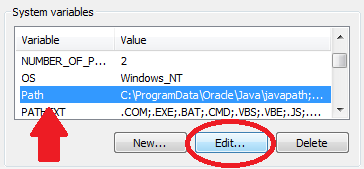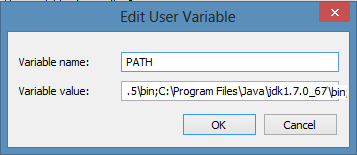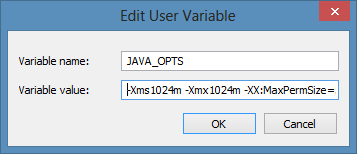...
- Before beginning, uninstall any existing versions of Java currently on your computer.
- In your web browser, go to http://www.oracle.com/technetwork/java/javase/downloads/index.html.(Please refer Compatible software versions)
NOTE: For every "Java SE 7u##" in this section, the "##" represents two numbers that indicate the latest update to version 7 of Java. This is what you will see on the Java webpage.
Scroll down slightly, to the section labeled Java SE 7u##. - To the right, under JDK, click the DOWNLOAD button.
- In the box labeled Java SE Development Kit 7u##, Oracle requires that you read the license agreement, then click the button labeled Accept License Agreement.
- Click the link to download the appropriate version of Java for your operating system:
- If you are running 64-bit Windows 7 (most likely), on the row where the Product / File Description says Windows x64, click the link jdk-7u##-windows-x64.exe.
- If you are running 32-bit Windows 7, on the row where the Product / File Description says Windows x86, click the link jdk-7u##-windows-i586.exe.
- Save the Java installation file to your computer.
- Run the Java installation file. When the file is complete,
...
- In your web browser, go to http://dev.mysql.com/downloads/mysql/. (Please refer Compatible software versions)
- NOTE: For every "MySQL 5.#" in this section, the "#" represents the latest update to version 5 of MySQL.
- Scroll down to the section MySQL Installer 5.6 for Windows.
- At the row labeled Windows (x86, 64-bit), MySQL Installer MSI, click the DOWNLOAD button.
- In the MySQL Installer 5.# section, there are two similar-looking rows that both start with Windows (x86, 32-bit), MSI Installer. At the first row, click the DOWNLOAD button.
- The next page gives you an option to create an Oracle Web account prior to downloading MySQL. You can skip this option by clicking the link at the bottom of the page that says No thanks, just start my download.
- Save the MySQL installation file to your computer.
- Run the MySQL installation file.
- During MySQL installation, use Advanced Configuration > Show Advanced Options to set the MySQL Root Password to mysql.
- During MySQL installation, use Advanced Configuration > Show Advanced Options to set the MySQL Root Password to mysql.
...
- Open the MySQL Workbench: Windows Start Menu > All Programs > MySQL > MySQL Workbench #.# CE (where #.# is a version number). Ie patient.
- When MySQL Workbench opens, click the box under MySQL Connections that is labeled MySQL## (where ## is a version number). A login box will be come up titled Connect to MySQL Server.
- For the Password, type mysql and click OK.
- Copy the following database command and paste it into the large white box titled Query 1:
create database `mifosplatform-tenants`; create database `mifostenant-default`; use `mifosplatform-tenants`; - Run the above database command from the MySQL Workbench menu, by clicking Query > Execute (All or Selection).
- Open and run the first-time-install MySQL script.
- In the MySQL Workbench menu, click File > Open SQL Script.
- Navigate to the location where you extracted the Mifos X application files.
- Navigate to the database folder inside that location.
- Select the file mifospltaform-tenants-first-time-install.sql and click Open.
- Run the first-time-install script from the MySQL Workbench menu, by clicking Query > Execute (All or Selection).
- From the MySQL Workbench menu, click File > Exit to close MySQL Workbench.
...
- In your web browser, go to http://tomcat.apache.org/download-70.cgi. (Please refer Compatible software versions)
- Under the section Binary Distributions>>Core, click the link tar.gz to download.
- Extract apache-tomcat-7.0.59.tar.gz:-
...
- Open your Environment Variables: Start Menu > Control Panel > System and Security > System > Advanced System Settings > Environment Variables.
- Create CATALINA_HOME variable:
- Under the System Variables section (the bottom of the two sections), click the New... button.
- For Variable Name, copy and paste this: CATALINA_HOME
- For Variable Value, Provide the tomcat path i.e C:\tomcat
- Click the OK button to get it created.
- Create JAVA_HOME variable:
- Click the New... button again, under the User Variables section.
- For Variable Name, enter JAVA_HOME
- For Variable Value,Provide the Java path enter C:\Program Files\Java\jdk1.7.0_67
NOTE:
i - If you are running 32-bit Windows 7, use this instead: C:\Program Files (x86)\Java\jdk1.7.0_67
ii - Java jdk path "jdk1.7.0_67" will be with respect to the installed version and it may not be the same as mentioned in the above example.
- Click the OK button.
- Edit PATH variable:
- In the System Variables section, scroll down to and select the Path variable.
- Click the Edit button just below.
- Click your mouse cursor into Variable Value box. Using your keyboard's right-arrow or End key, move all the way to the far right of the current text in Variable Value.
- Add the following text onto the end of the existing Variable Value text: ;C:\Program Files\Java\jdk1.7.0_67\bin
NOTE:
i - There must be exactly one semi-colon between whatever is already in your PATH variable, and the new C:\Program Files\Java\jdk1.7.0_67\bin – don't add a semi-colon if your previous PATH already ended with a semi-colon.
ii - Java jdk path "jdk1.7.0_67" will be with respect to the installed version and it may not be the same as mentioned in the above example.
Click the OK buttonmentioned in the above example. - Click the OK button
4. Create JAVA_OPTS variable:
- a. Click the New... button again, under the User Variables section.
- b. For Variable Name, enter JAVA_OPTS
- c. For Variable Value, example -Xms1024m -Xmx1024m -XX:MaxPermSize=512m
For more details refer: PermGen Out of Memory
Tomcat 7.0 Setup
- Ensure the following libraries are in the [TOMCAT_HOME]/lib folder:
- tomcat-jdbc.jar
If you are missing it use the following link to download: http://www.java2s.com/Code/JarDownload/tomcat-jdbc/tomcat-jdbc.jar.zip - mysql-connector-java-5.1.22(You will need to download latest MySQL Connector/J Jar file fromhttp://dev.mysql.com/downloads/connector/j/)
To download it you will need to make an Oracle account, after that run the downloaded file.
- tomcat-jdbc.jar
- Generate a new keystore using java keytool (if you havent already done this):
- Create keystore
- for Windows:
- for Unix:
- for Windows:
- Update server.xml as in docs with the following command:
- Create keystore
- Update tomcat configuration files for SSL
- Go to [TOMCAT_HOME]/conf and open server.xml with notepad:
- Delete everything in it and copy-paste the following code:
<?xml version='1.0' encoding='utf-8'?> <Server port="8005" shutdown="SHUTDOWN"> <Listener className="org.apache.catalina.core.JasperListener" /> <Listener className="org.apache.catalina.core.JreMemoryLeakPreventionListener" /> <Listener className="org.apache.catalina.mbeans.GlobalResourcesLifecycleListener" /> <Listener className="org.apache.catalina.core.ThreadLocalLeakPreventionListener" /> <GlobalNamingResources> <Resource name="UserDatabase" auth="Container" type="org.apache.catalina.UserDatabase" description="User database that can be updated and saved" factory="org.apache.catalina.users.MemoryUserDatabaseFactory" pathname="conf/tomcat-users.xml" /> <Resource type="javax.sql.DataSource" name="jdbc/mifosplatform-tenants" factory="org.apache.tomcat.jdbc.pool.DataSourceFactory" driverClassName="com.mysql.jdbc.Driver" url="jdbc:mysql://localhost:3306/mifosplatform-tenants" username="root" password="[root mysql password]" initialSize="3" maxActive="10" maxIdle="6" minIdle="3" validationQuery="SELECT 1" testOnBorrow="true" testOnReturn="true" testWhileIdle="true" timeBetweenEvictionRunsMillis="30000" minEvictableIdleTimeMillis="60000" logAbandoned="true" suspectTimeout="60" /> </GlobalNamingResources> <Service name="Catalina"> <Connector protocol="org.apache.coyote.http11.Http11Protocol" port="8443" maxThreads="200" scheme="https" secure="true" SSLEnabled="true" keystoreFile="/home/ubuntu/.keystore" keystorePass="testmifos" clientAuth="false" sslProtocol="TLS" URIEncoding="UTF-8" compression="force" compressableMimeType="text/html,text/xml,text/plain,text/javascript,text/css"/> <Engine name="Catalina" defaultHost="localhost"> <Realm className="org.apache.catalina.realm.LockOutRealm"> <Realm className="org.apache.catalina.realm.UserDatabaseRealm" resourceName="UserDatabase"/> </Realm> <Host name="localhost" appBase="webapps" unpackWARs="true" autoDeploy="true"> <Valve className="org.apache.catalina.valves.AccessLogValve" directory="logs" prefix="localhost_access_log." suffix=".log" pattern="%h %l %u %t "%r" %s %b" /> </Host> </Engine> </Service> </Server> Press Ctrl + S or File>Save.Close Notepad.
Below mentioned are to be updated in the same server.xml
i - Key store path should be updated like shown in example here:- keystoreFile="C:\Users\conflux9\.keystore"
ii - Key store password (which was provided while creating the key). Should also be updated like shown in example:- keystorePass="mif456"
iii - Provide your mysql user name and password, like in this example:- username="root"
password="mysql"
- Go to [TOMCAT_HOME]/conf and open server.xml with notepad:
- Dropping application into tomcat webapps folder
...
| Widget Connector | ||
|---|---|---|
|
| Info |
|---|
Please refer: Compatible software's |
Related articles
| Filter by label (Content by label) | ||||||||||||||||||
|---|---|---|---|---|---|---|---|---|---|---|---|---|---|---|---|---|---|---|
|
